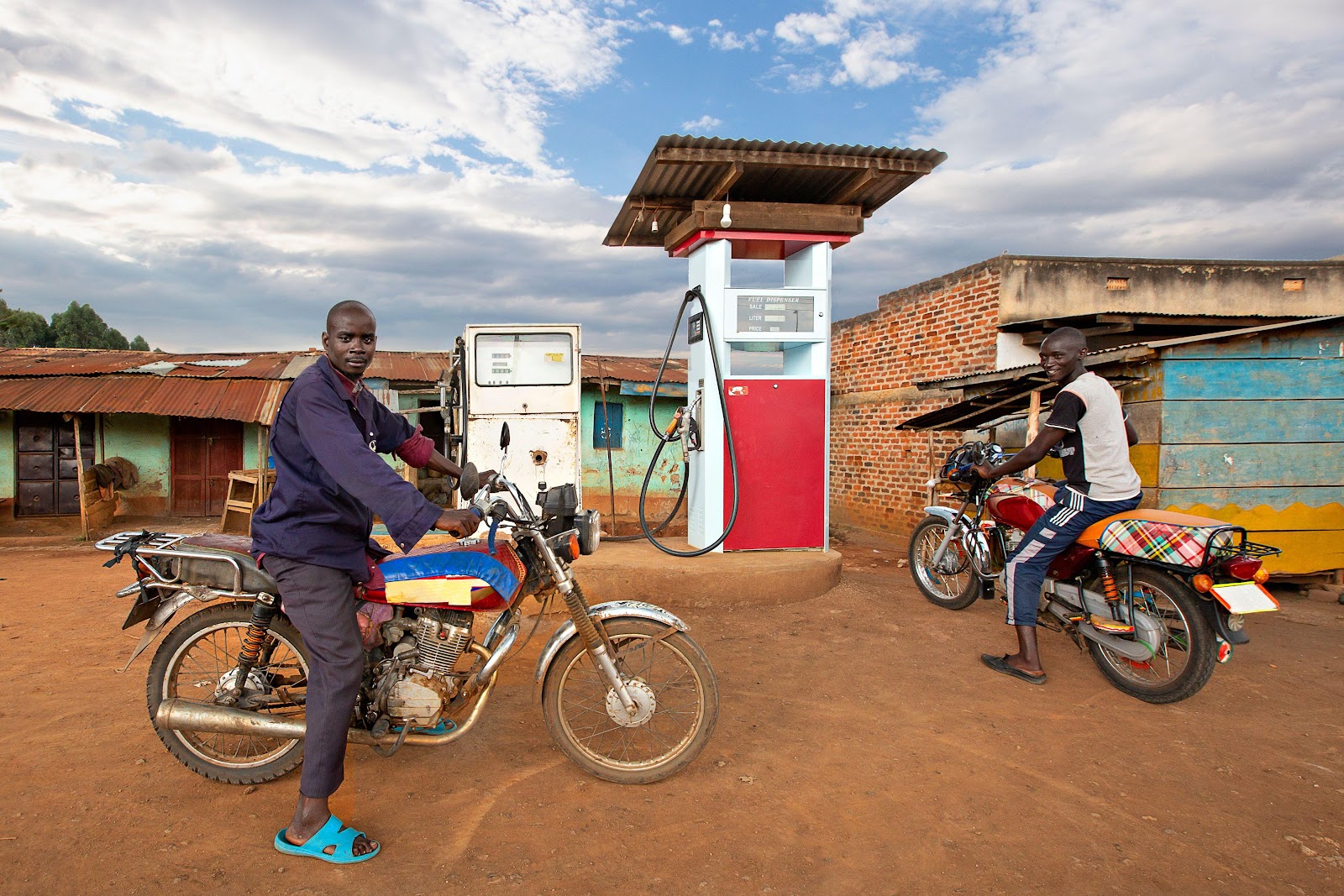Results from advertising in Mali
TL;DR: CPC.
At TwoSix, we frequently use social media advertisements to recruit participants for surveys. When planning these surveys, we develop a sample strategy based on years of empirical research into how online advertising works in a survey sampling context. When building new knowledge in this domain, our research generally isolates and seeks to answer some part of the following question: What proportion of which types of people in which geographies will complete a survey about what topic, and how much will they complete, based on what type of advertisement and what incentive model?
Recently, we have added another variable to this list: the advertising price optimization model. To examine this facet, we ran two identical sets of ads in Sikasso Region, Mali. The ads are shown in Figure 1, and their images broadly represent different topics related to a survey about local economies. One ad set used cost-per-mille (CPM) pricing, wherein we pay for every 1000 impressions shown. The other set of ads used cost-per-click (CPC) pricing, wherein we pay for each link click. In this blog post, we analyze the results of the ad campaigns (Tables 1 and 2).
| Fuel | Store | Harvest |
| Ad | Cost | Impressions | Reach | Clicks |
| Fuel | 92.03 | 114705 | 48082 | 651 |
| Store | 138.06 | 151544 | 59271 | 759 |
| Harvest | 184.07 | 194473 | 72552 | 1485 |
| Ad | Cost | Impressions | Reach | Clicks |
| Fuel | 91.40 | 178541 | 52745 | 1845 |
| Store | 137.54 | 306151 | 45651 | 2603 |
| Harvest | 182.54 | 336168 | 66724 | 3755 |
Prior findings indicate that different subsets of the Malian population will respond to the framing of a survey (i.e., each of these ads) differently, so we use three different ads to understand whether engagement with different types of ads changes based on the price optimization model.
Results:
- As expected, for CPM the number of impressions is roughly proportional to the cost (~$0.90 per 1000 impressions) and for CPC the number of clicks is roughly proportional to the cost (~$0.05 per click).
- Using CPC, we get 2.8 times more clicks and 1.8 times more impressions than using CPM.
- We could have obtained the same number of clicks as the $414 of CPM using only $146 of CPC.
- CPM has 1.1 times more combined reach than CPC.
- The click-to-impression rate is significantly different between the two pricing models. For CPM, it is 1 click to 159 impressions, and for CPC it is 1 click to 100 impressions.
- Of the three ads, the “harvest” ad is the most efficient in terms of cost-per-click, whether optimized via CPM or CPC, and the “store” ad is the least efficient in terms of clicks, for both CPM and CPC.
- Ignoring cost and regularizing in terms of clicks-per-impression, the store ad is the worst performing ad under both price models, whereas the harvest ad is the best performing ad under both models.
- For the low-performing store ad, when optimizing by CPC, we observe that Facebook algorithmically boosts impressions of the store ad to increase its cost-per-click to near-parity with the other two ads.
These results are not a complete surprise. According to the Meta Business Help Center, “When you choose a performance goal for an ad set, you’re telling us to get you that result as efficiently as possible… For example, if you choose link clicks, your ads are targeted to people in your audience who are most likely to click the ads’ links.” (About performance goals). So the CPC pricing model biases showing the ads to people most likely to click the ads.
Thus, we establish a quantitative basis for the following heuristic:
- Use CPM when less bias and higher reach are more desirable, but expect to pay more money (three times more, in this case)
- Use CPC when you want the most amount of clicks for the least amount of money.
Acknowledgements:
This work was supported by the Defense Advanced Research Projects Agency (DARPA) and the Army Research Laboratory under Contract No. [W911NF-21-C-0007]. Any opinions, findings and conclusions or recommendations expressed in this material are those of the authors and do not necessarily reflect the views of the Defense Advanced Research Projects Agency (DARPA), the Department of Defense, or the United States Government.
Distribution Statement A. Approved for public release: distribution is unlimited.






